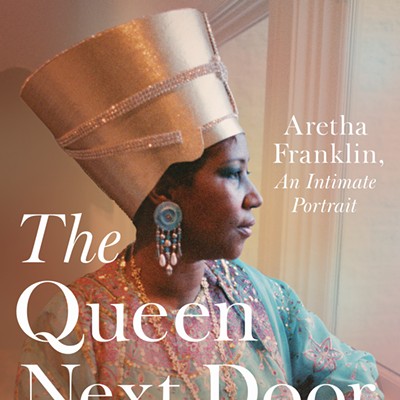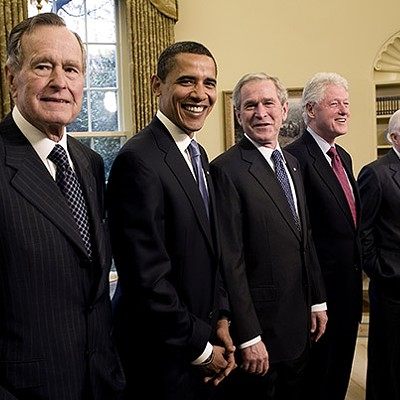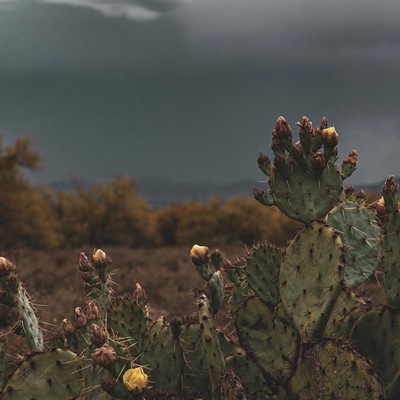The reason, she said last week over coffee at a local café, was that she wasn't interested in doing the standard "cookie-cutter" photography book, "with a celebrity introduction, a scholarly essay and then the portfolio."
If she were to do a Strand book at all, she told Busselle, it would have to explore why Strand came to northern New Mexico in the early 1930s and photographed its sensuous churches, rough adobes and sweeping landscapes. It would have to look into the cross-pollination within the circle of artists--from Paul and Rebecca Strand to D.H. Lawrence and Georgia O'Keeffe--that Mabel Dodge Luhan gathered around her at her Taos ranch. And it would have to delve into the complicated relationship Strand had not only with his own wife, but with O'Keeffe and her husband, the seminal photographer Alfred Stieglitz.
"As an American studies person, for me, the cultural context was the most important thing," said Wilner Stack, who did her graduate work at Yale. "What was influencing Strand at that time? He was a Jewish New Yorker, the child of immigrants, who went to the Southwest when it was still pretty much a frontier defined by the landscape and the native cultures."
To get at the answers, Wilner Stack preferred to let the primary sources speak mostly for themselves, an approach she'd used during her 10 years as curator at the Center for Creative Photography. (She resigned her center post in 2002 to become an independent scholar and curator.) For dozens of critically acclaimed shows and numerous scholarly books, Wilner Stack drew on the center's archives, a treasure trove not only of photographs but of letters and diaries, and even camera equipment.
"Having worked at the center, and having included such material in all those shows, I knew history could be illustrated by ephemera," she said.
Busselle took Wilner Stack's ideas back to the editors at the Aperture Foundation, which owns the Strand photographic archive and wanted to publish the New Mexico works. Busselle, herself a widely published author, reported back to Wilner Stack, "Everybody thinks that's great."
"So I had to do it," Wilner Stack said with a grin.
As a result, the handsome book she co-authored with Busselle, Paul Strand Southwest (Aperture Foundation, 2004, $50), is structured quite differently from the conventional photography volume. It begins with the photographs.
The 50 superb black-and-whites that Wilner Stack selected from among the 200 that Strand made in New Mexico in the summers of 1930, '31 and '32 are printed on the opening pages without any text at all, not even titles.
Not until after the reader has looked through page after page filled with stark portraits of Rebecca Strand and pictures of New Mexico's big skies and textured adobes do the authors' voices intrude. Even then, in the text placed at the back of the book, they don't offer the usual comprehensive essay. Instead, Wilner Stack and Busselle have written a fairly neutral chronology, interspersed with a cornucopia of primary materials, mostly drawn from the center's collections. There's everything from exhibition notices, snapshots and paintings reproduced in color to reviews, interviews and letters written by Strand and his circle.
The letters trace the tale of Strand going to the West for the first time as Stieglitz's emissary to O'Keeffe in Texas. (He also became her lover.) Later, married to Rebecca, he traveled to Colorado and the ruins of Mesa Verde. And after O'Keeffe and Rebecca traveled to New Mexico together and reported on its wonders, the Strands went to Taos together, for three summers running.
O'Keefe, in a letter to Strand in 1917, shows that the cross-pollination among the artists started early on.
"I believe I've been looking at things and seeing them as I thought you might photograph them," the painter wrote. "Isn't that funny--making Strand photographs for myself in my head."
And Stieglitz, who was mentor to both O'Keeffe and Strand, was almost as enraptured--for a time--by Strand's gifts. In 1927, he wrote to Rebecca Strand about Paul's Mesa Verde pictures:
"Yes, several of these photographs of Paul's are very fine--he told me how they happened--after I had remarked that these were truly alive and beyond the tangible."
Strand himself, writing to the painter John Marin from Taos in 1931, describes the hold the Western landscape had on eastern artists.
"Black clouds over the hills beyond Mabel's house which means rain somewhere--but down toward Ranchos that blue New Mexican sky with puffs of white clouds," he wrote. "Over toward your beloved Hondo there is a grayness behind more white clouds--and a breeze blowing across the afternoon."
Strand--and O'Keeffe, Marin and other artists of the time--"were trying to establish an American voice distinct from Europe," Wilner Stack said. In the Southwest, with its Native and Hispanic cultures, its ancient ruins and its New World landscape, startlingly different from the Old, they found a place where they could speak in that new voice.
"He was so influenced by all these painters," Wilner Stack said. "I wanted people to make all these connections. ... I was keen that primary sources tell the story. Let the art speak for itself."
And the art does. While a few of the most famous images from Strand's New Mexico series are here--particularly the iconic Ranchos de Taos church, all curving adobe lines--the authors mostly emphasized pictures that are not well known. They've included austere portraits of Rebecca Strand, posed starkly against the sky; a rough wooden fence in close-up, a counterpoint to a much better-known Strand picture of a white picket fence; and lovely pictures of the landscape--hillocks rolling along under the big, Western sky--that so enraptured Strand. All images are printed the actual size of the originals.
For the cover of the book, Wilner Stack said, they chose a small picture (from 1932) of a portion of the Ranchos de Taos church, a tightly focused fragment of wall against a darkening sky.
Strand is a "great modernist master," she said. But this small, abstracted picture demonstrates just how original he was.
"It's minimalist, modernist, decontextualized. It's the most revolutionary image of the church."














